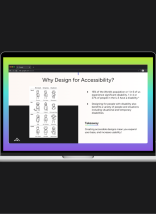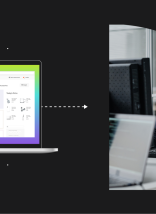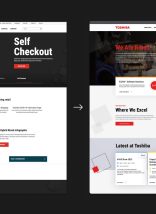One of the things that separates us from many other digital agencies is that we don’t only build websites. Our designs are specific and unique to the vision of our clients. We ask them the right questions so their answers can guide our work. The more we listen, the easier it is to help our clients find the perfect layout and strategy. One topic, in particular, allows us to reach this goal. We establish a “wish list” of items our clients would like to have. Then, we narrow in on the priorities the organization is actually focused on. This might seem like a small thing, but it’s an important part of our philosophy. That’s because no group has the time or budget to follow through on every idea or moment of inspiration. There are always too many possibilities and not enough resources to cover each one.
We often advise readers and clients to consider constraints to any new project. How does your budget affect what you’re able to build? What legal regulations and rules must you be in compliance with? The answers to those questions will help you map out the strongest path to your goal. They will allow you to answer another, vital question. What are your priorities in a web design project? Your answers won’t be the same as anyone else’s. But, here are a few we consistently hear from the executives we work with.
Measurable Hard Benefits
This is the most popular set of priorities. Of course everyone wants to see their website be successful in driving up traffic. That’s often the biggest motivator to begin with. If traffic wasn’t lagging, you might not have this project on your hands.
The priorities you’re looking for here are measurable ones. There is a clear “before and after” picture. You want to see growth in sales, lead generation, and new revenue, among others. If you’re looking for a specific business result from your web design project, take note. Achieving it might be more important to you than anything else on this list.
Keeping Web Design Costs Down
Your organization or department could be on a tight budget. Your website still needs to meet a certain set of requirements. But, it must also do so under a specific cost. This constraint is very effective at weeding out the “nice to haves” from the “must haves”. You may find that you have some flexibility around goals you once thought were necessary. If staying under budget is a top priority for your team, you’ll have to re-weigh those original plans. In the end, you’ll end up with a strong, concise, and affordable website.
Meeting a Deadline
Websites have deadlines for a variety of reasons. There could be a new product rolling out in need of an updated website to promote it. A larger media promotion could be in the works. Or a real-life, time sensitive event could be upcoming. Regardless of the cause, your project is on the clock.
If this is the case, getting things done on time could be your most important benchmark for success. Develop a place that takes into account the restricted amount of time. Knowing what parts of the project are worth your time helps you to focus on what your site needs.
Aiming for User or Customer Satisfaction
Keeping customers and users happy is often a client’s biggest concern. For other companies, the happiness of their consumers will also be important. But, this could be secondary to meeting hard business targets or balancing budgets. There is isn’t always a right answer. Every company has different services and goals. A smart choice for one group might be a terrible choice for another.
If the satisfaction of your users is tantamount to success, then zero in on how to best make that happen. Dive into the research and use the results to guide your decisions and design. You’ll develop a website made with the users in mind and they’ll know it.
Soft Benefits and Savings
When we discuss soft benefits, we’re referring to less tangible aspects of the project. Team communication, improved morale, or an easy scheduling system would all count. Many of the executives we work with consider these goals to be ancillary to other ones. But, they may be big drivers of success in your organization. A soft benefit could be the key to staying under budget or on schedule. At the very least, they deserve consideration, even if they aren’t a top priority.
Making Sense of Web Design Priorities
This list is an example of the most common priorities teams choose to focus on. It is in no way definitive. You can choose several different goals for your project. In fact, some of the most important ones for your specific work might not even appear here. What matters the most is what your project needs so it can reach the finish line. What feels mission-critical to your web development project? Which priorities follow that? This tiered planning can reduce distractions and enhance the strengths of your website. Your web design team will have solid direction to work with. Even better, you’ll be able to allocate your resources in a way that makes sense.
Want to work with the creative team that makes your organization their priority? Contact Atlantic BT in North Carolina today to schedule a free consultation!






